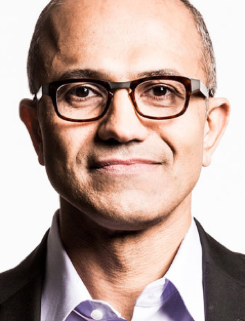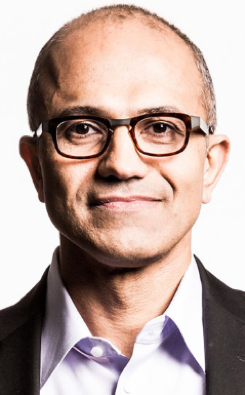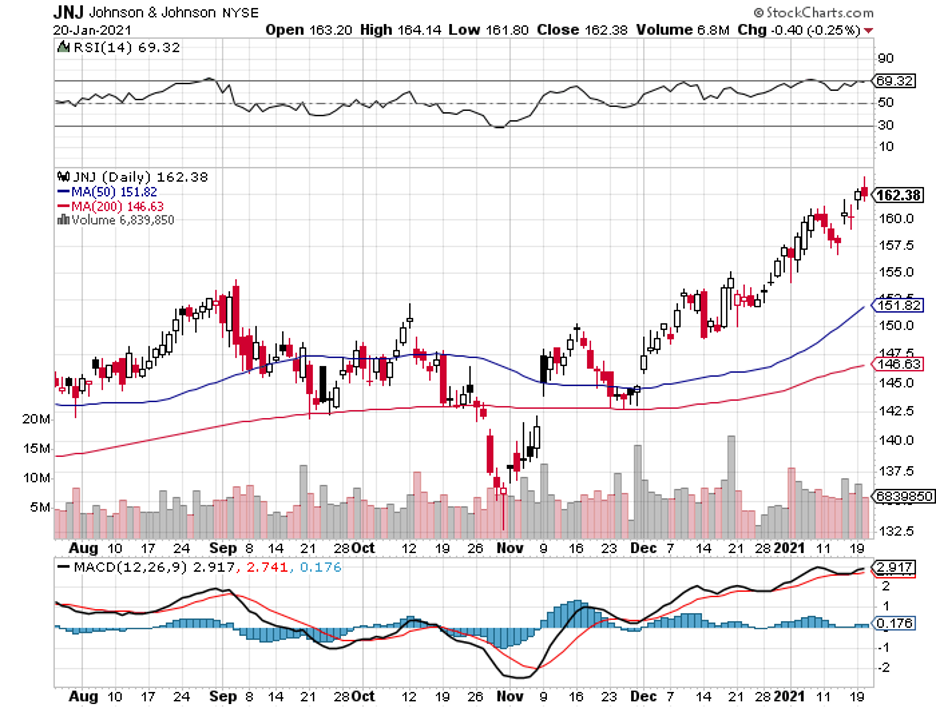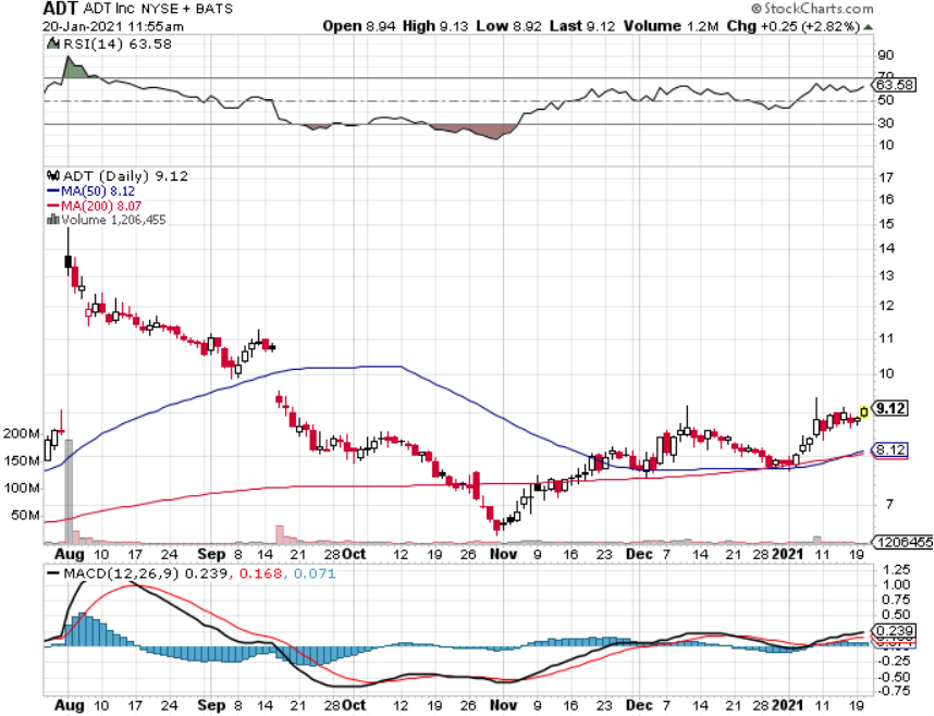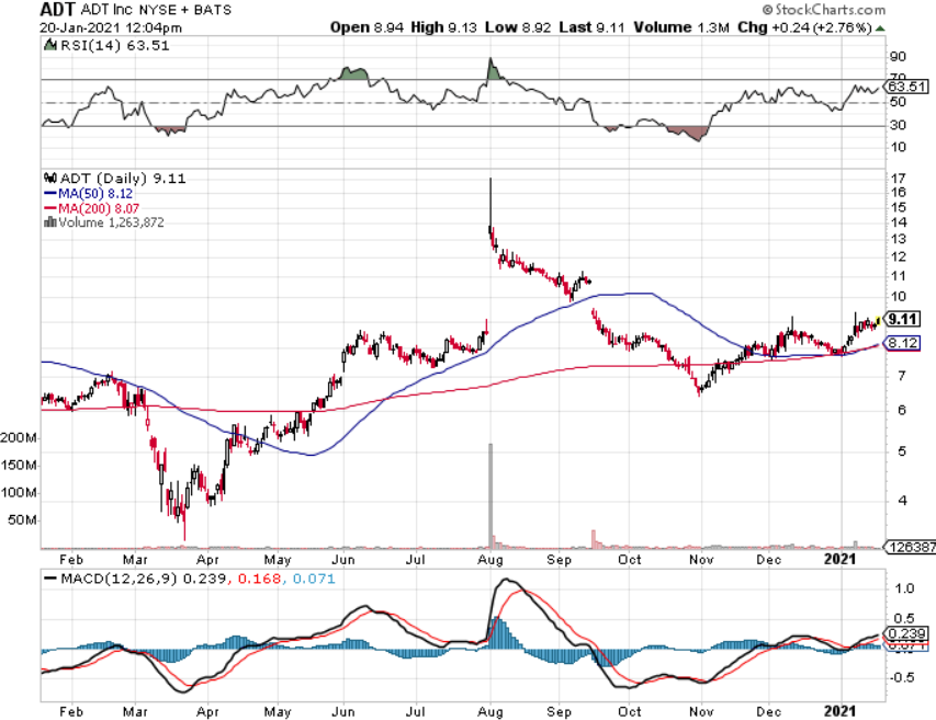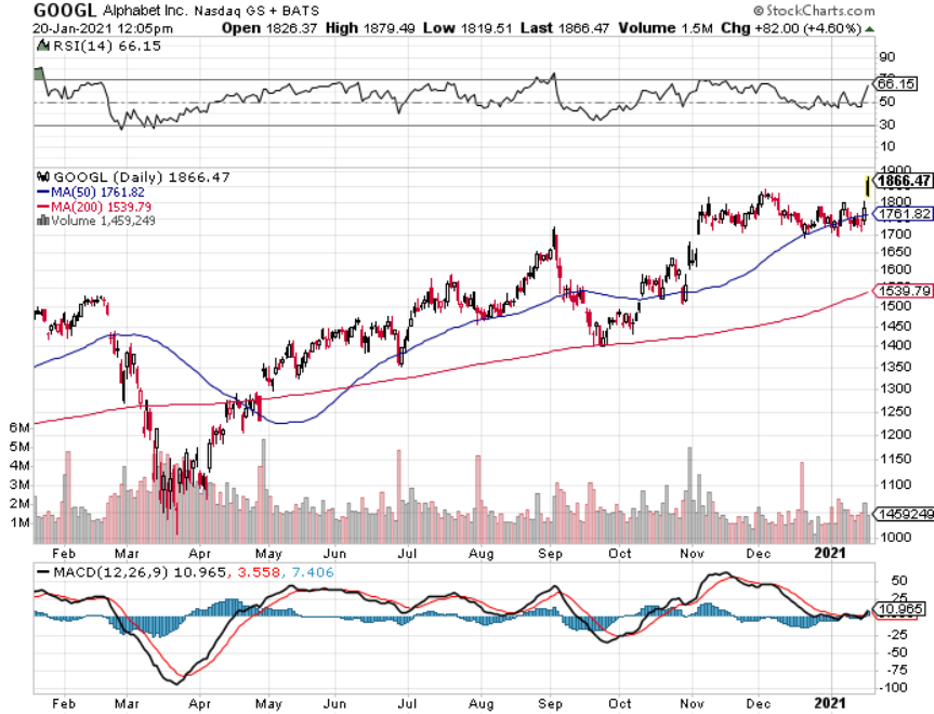“I don't want to fight old battles. I want to fight new ones” – Said CEO of Microsoft Satya Nadella
Global Market Comments
January 22, 2021
Fiat Lux
Featured Trade:
(JANUARY 20 BIWEEKLY STRATEGY WEBINAR Q&A),
(QQQ), (IWM), (SPY), (ROM), (BRK/A), (AMZN), NVDA), (MU), (AMD), (UNG), (USO), (SLV), (GLD), ($SOX), CHIX), (BIDU), (BABA), (NFLX), (CHIX), ($INDU), (SPY), (TLT)
Below please find subscribers’ Q&A for the January 20 Mad Hedge Fund Trader Global Strategy Webinar broadcast from Incline Village, NV.
Q: What will a significant rise in long term bond yields (TLT) do to PE ratios in general, and high tech specifically?
A: Well, the key question here is: what is “significant”. Is “significant” a move in a 10-year from 120 to 150, which may be only months off? I don’t think that will have any impact whatsoever on the stock market. I think to really give us a good scare on interest rates, you need to get the 10-year up to 3.0%, and that might be two years off. We’re also going to be testing some new ground here: how high can bond interest rates go while the Fed keeps overnight rates at 25 basis points? They can go up more, but not enough to hurt the stock market. So, I think we essentially have a free run on stocks for two more years.
Q: What about the Shiller price earnings ratio?
A: Currently, it’s 34.5X and you want to completely ignore anything from Shiller on stock prices. He’s been bearish on stocks for 6 years now and ignoring him is the best thing you can do for your portfolio. If you had listed to him, you would have missed the last 15,000 Dow ($INDU) points. Someday, he’ll be right, but it may be when the market goes from 50,000 to 40,000, so again, I haven't found the Shiller price earnings ratio to be useful. It’s one of those academic things that looks great on paper but is terrible in practice.
Q: Do you see any opportunity in China financials with the change of administration, like the (CHIX)?
A: I always avoid financials in China because everyone knows they have massive, defaulted loans on their books that the government refuses to force them to recognize like we do here. So, it’s one of those things where they look good on paper, but you dig deeper and find out why they’re really so cheap. Better to go with the big online companies like Baidu (BIDU) and Alibaba (BABA).
Q: Is it too late to enter copper?
A: No, the high in the last cycle for Freeport McMoRan (FCX) was $50 dollars and I think we’re only in the mid $ ’20s now, so you could get another double. Remember, these commodity stocks have discounted recovery that hasn’t even started yet. Once you do get an actual recovery, you could get another enormous move and that's what could take the Dow to 120,000.
Q: Do you see the FANGs coming back to life with the earnings results?
A: I think it'll take more than just Netflix to do that. By the way, Netflix (NFLX) is starting to look like the Tesla of the media industry, so I’d get into Netflix on the next dip. You could get a surprise, out-of-nowhere double out of that anytime. But yes, FANGs will come to life. They've been in a correction for five months now, and we’ll see—it may be the end of the pandemic that causes these stocks to really take off. So that's why I'm running the barbell portfolio and buying the FANGs on weakness.
Q: Are you recommending LEAPS on gold (GLD) and silver (SLV)?
A: Absolutely yes, go out two years with your maturity, you might buy 120% out of the money. That's where you get your leverage on the LEAPS. Something like a (GLD) January 2023 $210-$220 in-the-money vertical bull call spread and generate a 500% profit by expiration.
Q: Do you foresee a cool off for semiconductors ($SOX) even though there's been recent news of shortages?
A: No, not really. There are so many people trying to get into these it’s incredible. And again, we may get a time correction where we sideline at the top and then break out again to the upside. This is classic in liquidity-driven markets, which is what we have in spades right now. Thanks to 5G, the number of chips in your everyday devices is about to increase tenfold, and it takes at least two years to build a new chip factory. So, keep buying (NVDA), (MU), and (AMD) on dips.
Q: Where are the best LEAPS prospects (Long Term Equity Participation Securities)?
A: That would have to be in technology—that's where the earnings growth is. If you go 20% out of the money on just about any big tech LEAPs two years out, to 2023 those will be worth 500% more at expiration.
Q: What about SPACs (Special Purpose Acquisition Company) now, as we’re getting up to five new SPACs a day?
A: My belief is that a SPAC is a vehicle that allows a manager to take out a 20% a year management fee instead of only 1%. And it's another aspect of the current mania we’re in that a lot of these SPACs are doubling on the first day—especially the electric vehicle-related SPACs. Also, a lot of these SPACs will never invest in anything, but just take the money and give it back to you in two years with no return when they can't find any good investments…. If you’re lucky. There's not a lot of bargains to be found out there by anyone, including SPAC managers.
Q: Does natural gas (UNG) fall into the same “avoid energy” narrative as oil?
A: Absolutely, yes. The only benefit of natural gas is it produces 50% less carbon dioxide than oil. However, you can't get gas without also getting oil (USO), as the two come out of the pipe at the same time; so I would avoid natural gas also. Gas and oil are also about to lose a large chunk, if not all, of their tax incentives, like the oil depletion allowance, which has basically allowed the entire oil industry to operate tax-free since the 1930s.
Q: What about hydrogen cars?
A: I don't really believe in the technology myself, and when you burn hydrogen, that also produces CO2. The problem with hydrogen is that it’s not a scalable technology. It’s like gasoline—you have to build stations all over the US to fuel the cars. Of course, it produces far less carbon than gas or natural gas, but it is hard to compete against electric power, which is scalable and there's already a massive electric grid in place.
Q: If you inherited $4 million today, would you cost average into (QQQ), (IWM), or (SPY)?
A: I would go into the ProShares Ultra Technology ETF (ROM), which is double the (QQQ); and if you really want to be conservative, put half your money into (QQQ) or (ROM), and then half into Berkshire Hathaway (BRK/A), which is basically a call option on the industrial and recovery economy. I know plenty of smart people who are doing exactly that.
Q: Is it weird to see oil, as well as green energy stocks, moving up?
A: No, that's actually how it works. The higher oil and gas prices go, the more economical it is to switch over to green energy. So, they always move in sync with each other.
Q: I heard rumors that Amazon (AMZN) is likely to raise Prime’s annual fee by $10-20 a year in 2021. Will that be a catalyst for the stock to go higher?
A: Yes. For every $10 dollars per person in Prime revenue, Amazon makes $2 billion more in net profit. I would say that's a very strong argument for the stock going up and maybe what breaks it out of its current 6-month range. By the way, Amazon is wildly undervalued, and my long-term target is $5,000.
Q: Do you think that the spike in Apple (AAPL) MacBook purchases means that computers will overtake iPhones as the revenue driver for Apple in 2021, or is the phone business too big?
A: The phone business is too big, and 5G will cause iPhone sales to grow exponentially. Remember, the iPhones themselves are getting better. I just bought the 12G Pro, and the performance over the old phone is incredible. So yeah, iPhones get bigger and better, while laptops only grow to the extent that people need an actual laptop to work on in a fixed office. Is that a supercomputer in your pocket, or are you just glad to see me?
Q: Share buybacks dried up because of revenue headwinds; do you think they will come back in a massive wave, giving more life to equities?
A: Absolutely, yes. Banks, which have been banned from buybacks for the past year, are about to go back into the share buyback business. Netflix has also announced that they will go buy their shares for the first time in 10 years, and of course, Apple is still plodding away with about $100 or $200 million a year in share buybacks, so all of that accelerates. The only ones you won't see doing buybacks are airlines and Boeing (BA) because they have such a mountain of debt to crawl out from before they can get back into aggressive buybacks.
Q: Interest rates are at historic lows; the smartest thing we can do is act big.
A: That’s absolutely right; you want to go big now when we’re all suffering so we can go small later and run a balanced budget or even pay down national debt if the economy grows strong enough. The last person to do that was Bill Clinton, who paid down national debt in small quantities in ‘98 and ‘99.
Q: What do you think about General Motors (GM)?
A: They really seem to be making a big effort to get into electric cars. They said they're going to bring out 25 new electric car models by 2025, and the problem is that GM is your classic “hour late, dollar short” company; always behind the curve because they have this immense bureaucracy which operates as if it is stuck in a barrel of molasses. I don’t see them ever competing against Tesla (TSLA) because the whole business model there seems like it’s stuck in molasses, whereas Tesla is moving forward with new technology at warp speed. I think when Tesla brings out the solid-state battery, which could be in two years, they essentially wipe out the entire global car industry, and everybody will have to either make Tesla cars under license from Tesla—which they said they are happy to do—or go out of business. Having said that, you could get another double in (GM) before everyone figures out what the game is.
Q: Will you update the long-term portfolio?
A: Yes, I promise to update it next week, as long as you promise me that there won’t be another insurrection next week. It’s strictly a time issue. After last year being the most exhausting year in history, this year is proving to be even more exhausting!
Q: Do you see a February pullback?
A: Either a small pullback or a time correction sideways.
Q: Do you think the Zoom (ZM) selloff will continue, or is it done now that the pandemic is hopefully ending?
A: It’s natural for a tech stock to give up one third after a 10X move. It might sell off a little bit more, but like it or not, Zoom is here to stay; it’s now a permanent part of our lives. They’re trying to grow their business as fast as they can, they’re hiring like crazy, so they’re going to be a big factor in our lives. The stock will eventually reflect that.
Good Luck and Stay Healthy.
John Thomas
CEO & Publisher
The Diary of a Mad Hedge Fund Trader
Mad Hedge Biotech & Healthcare Letter
January 21, 2021
Fiat Lux
FEATURED TRADE:
(IS JOHNSON & JOHNSON THE BEST CORONAVIRUS STOCK?)
(JNJ), (MRNA), (PFE), (AZN), (NVAX)
To date, some coronavirus vaccine stocks have managed to offer investors huge gains within short periods.
Moderna (MRNA) is a prime example, climbing to over 400% in 2020 as more and more investors bet on the biotech’s COVID-19 program.
Interestingly, Pfizer (PFE) fell by less than 1% during the same period despite the fact that both companies led the COVID-19 vaccine race.
Actually, it was Pfizer that eventually won the first Emergency Use Authorization.
Investing in COVID-19 vaccines brought about vastly different outcomes.
Now, let’s take a look at the next company to potentially enter the market: Johnson & Johnson (JNJ).
At the moment, JNJ’s candidate is in Phase 3 trials. What makes this trial interesting is the dosing regimen.
JNJ is evaluating two options in its Phase 3 trials.
The first option, called “Ensemble,” studies the effect of a single dose of its COVID-19 vaccine.
The second option, “Ensemble 2,” examines how the vaccine works when administered in two doses.
Results are expected to be released before January 2021 ends.
If all turns out positive, then JNJ will be the third company to cross the COVID-19 vaccine race finish line.
Both Moderna and Pfizer require two doses. Even its close-to-market competitors like AstraZeneca (AZN) and Novavax (NVAX) have developed two-dose products.
Needless to say, a proven safe and effective one-dose regimen would provide JNJ’s vaccine a significant competitive advantage.
Obviously, people would prefer the idea of a one-jab vaccine instead of getting two. More importantly, this regimen would make it easier to vaccinate more individuals.
For example, Moderna’s goal is to supply 1 billion doses in 2021. However, that will only cover half or 500 million people.
In comparison, JNJ’s promise of producing 1 billion doses per year will be sufficient to immunize 1 billion individuals.
Another advantage is JNJ vaccine’s storage requirement.
Unlike Pfizer and Moderna’s vaccines, JNJ’s candidate can be stored at refrigerator temperatures for at least 3 months.
Taking all these into consideration, JNJ’s vaccine is looking promising.
Now, let’s check out its revenue potential.
Taking cue from AstraZeneca, JNJ has announced its decision to offer its vaccine on a not-for-profit basis during the COVID-19 pandemic.
This means it plans to sell the product at cost.
Without any profit from this venture, we can’t count on the COVID-19 vaccine to add to the company’s earnings in the near future.
Post-pandemic, though, the company could eventually raise the price and start benefiting from its sales.
While there’s no definitive timeline, this could be around the later parts of 2021. Based on that prediction, JNJ could start benefiting from its COVID-19 vaccine sales by early 2022.
JNJ can easily become a leader in the coronavirus market if its one-dose vaccine gains regulatory approval from health agencies across the globe.
However, I don’t expect major gains in its share price even if it does happen.
From what I’ve observed so far with Moderna and Pfizer, the shares of clinical-stage biotechnology companies tend to soar while those of bigger biopharmaceutical counterparts do not.
That’s most likely because the smaller companies will rely heavily on the COVID-19 vaccine revenue while the more established companies, with their extensive range of commercialized products, won’t.
With the sheer size of JNJ, which has a market capitalization of over $427 billion, its shares seldom make huge moves.
Still, JNJ continues to show incremental and steady growth in profits, revenue, and even share price.
In fact, the company is up by over 10% over the previous year. More importantly, investors can always count on the company for dividends.
So, I wouldn’t buy JNJ shares only for its COVID-19 vaccine candidate. It’s not the best idea to buy a stock because of a single product anyway.
But, I would definitely buy JNJ shares for its overall portfolio and its ever-reliable increasing dividend payouts.
Global Market Comments
January 21, 2021
Fiat Lux
Featured Trade:
(WHICH IS THE CHEAPEST US STATE?)
When John identifies a strategic exit point, he will send you an alert with specific trade information as to what security to sell, when to sell it, and at what price. Most often, it will be to TAKE PROFITS, but, on rare occasions, it will be to exercise a STOP LOSS at a predetermined price to adhere to strict risk management discipline. Read more
Mad Hedge Technology Letter
January 20, 2021
Fiat Lux
Featured Trade:
(THE CONTRARIAN PLAY)
(ADT), (GOOGL)
How about a tech contrarian play focused on one of the more primitive areas of technology?
And did I say it’s cheap?
Among the discounted tech equities out there is security specialist, ADT (ADT), that is increasingly using technology as solutions for its customers.
This time, I am talking about normal folks just wanting to live their lives, the collective desires certainly trend towards investors buying security home solutions ADT stock that use technology to protect your home.
Yes, this isn’t a sexy tech stock, but not all are.
And contrary to initial thought, crime has gone down nationally during the pandemic because more people working from home meant less opportunity for trouble to come about the home.
The US set records for decreases in residential burglaries last year, but we all know that it will be different when the freedom of autonomy picks up and we are out of our houses on Friday and Saturday night.
Even in the Great Recession of 2008, crime increased presumably to financial desperation and need.
This sets the stage for ADT to experience more buying as we press into 2021.
What is the bull case as we dig into the weeds?
The ability to get on-premise security solutions today is markedly better than what it was a year ago or the ability three or four months ago.
The strength in execution resulted in ADT finishing Q3 with strong backlogs, the highest of the year.
They had solid sales in install in October as well.
So it's broadly diversified, much of it tied with getting access to the premises.
I’m optimistic about the commercial business with total revenue up sequentially in Q3.
The business includes a largely recurring revenue base of 35%.
It's buoyant and durable, highly diversified stuff. ADT is just shy of 250,000 customers in the commercial business.
There is upside in new and growing verticals, healthcare, education, government, critical infrastructure.
ADT also boasts the best service in the space, and that's the most critical source of differentiation.
Even though the total reported revenue in the quarter was essentially flat year-over-year, 2021 should translate into a “growth” year.
Installation and other revenue increased by $46 million, driven mainly by higher reported residential outright sales revenue resulting from the Defenders acquisition.
This increase was partially offset by lower installation revenue to commercial customers resulting from pandemic-induced economic challenges.
Monitoring and services revenue was up slightly year-over-year.
ADT generated $127 million of adjusted free cash flow during the third quarter. And through the first nine months of 2020, their adjusted free cash flow of $532 million is up more than 15% from the $459 million during the same period in 2019.
The strong year-to-date cash performance comes from a myriad of factors that more than offset the higher cash interest, including subscriber acquisition cost efficiency and the benefits from some favorable cost base trends in the current operating environment, along with some timing items.
First, the new direction with Alarm.com includes the launch of a first-generation ADT + Google offering developed through the commitment by Alarm.com that will result in several tailwinds.
First, it leverages the foundation and extends Command and Control until the end of 2022, and then beyond that, allows that platform to support end customers for the long haul.
I believe customers with integrated Google Nest product and services will perform well on an attrition basis because the product will be one of the superior ones.
The second benefit, integrated Google Nest services and Google Video services will be available and accelerate go-to-market with a co-branded offering in the second half of 2021 instead of mid-'22.
At a high level, ADT will capture efficiencies as a result while navigating a unique product road map to create differentiation.
Leveraging Google's prowess in machine learning and Artificial intelligence to fuel what Google calls ambient computing is the next-gen of home security solutions.
In computing, ambient intelligence (AmI) refers to electronic environments that are sensitive and responsive to the presence of people. Ambient intelligence was a projection on the future of consumer electronics, telecommunications, and computing that was originally developed in the late 1990s by Eli Zelkha and his team at Palo Alto Ventures for the time frame 2010–2020.
And if you can imagine for a moment, in today's world, to leverage this machine learning supported system in different ways with rules and automation, this will only increase the prestige and revenue drivers of ADT’s brand.
Another positive data point was the attrition rate, a record low 12.9% that was widespread across geographies, all categories, across all business areas. SMB was flat but residential and core commercial improved.
As 2021 plays out, I believe a combination of positive macroeconomic and macro-environmental factors will stick with ADT helping to continue to drive improvements in the business through the uncertainty of the end of the health crisis and beyond.
Although I wouldn’t put my life savings into ADT, it is worth a flier at $9 today.
"It has become appallingly obvious that our technology has exceeded our humanity." - Said Albert Einstein.
Legal Disclaimer
There is a very high degree of risk involved in trading. Past results are not indicative of future returns. MadHedgeFundTrader.com and all individuals affiliated with this site assume no responsibilities for your trading and investment results. The indicators, strategies, columns, articles and all other features are for educational purposes only and should not be construed as investment advice. Information for futures trading observations are obtained from sources believed to be reliable, but we do not warrant its completeness or accuracy, or warrant any results from the use of the information. Your use of the trading observations is entirely at your own risk and it is your sole responsibility to evaluate the accuracy, completeness and usefulness of the information. You must assess the risk of any trade with your broker and make your own independent decisions regarding any securities mentioned herein. Affiliates of MadHedgeFundTrader.com may have a position or effect transactions in the securities described herein (or options thereon) and/or otherwise employ trading strategies that may be consistent or inconsistent with the provided strategies.

